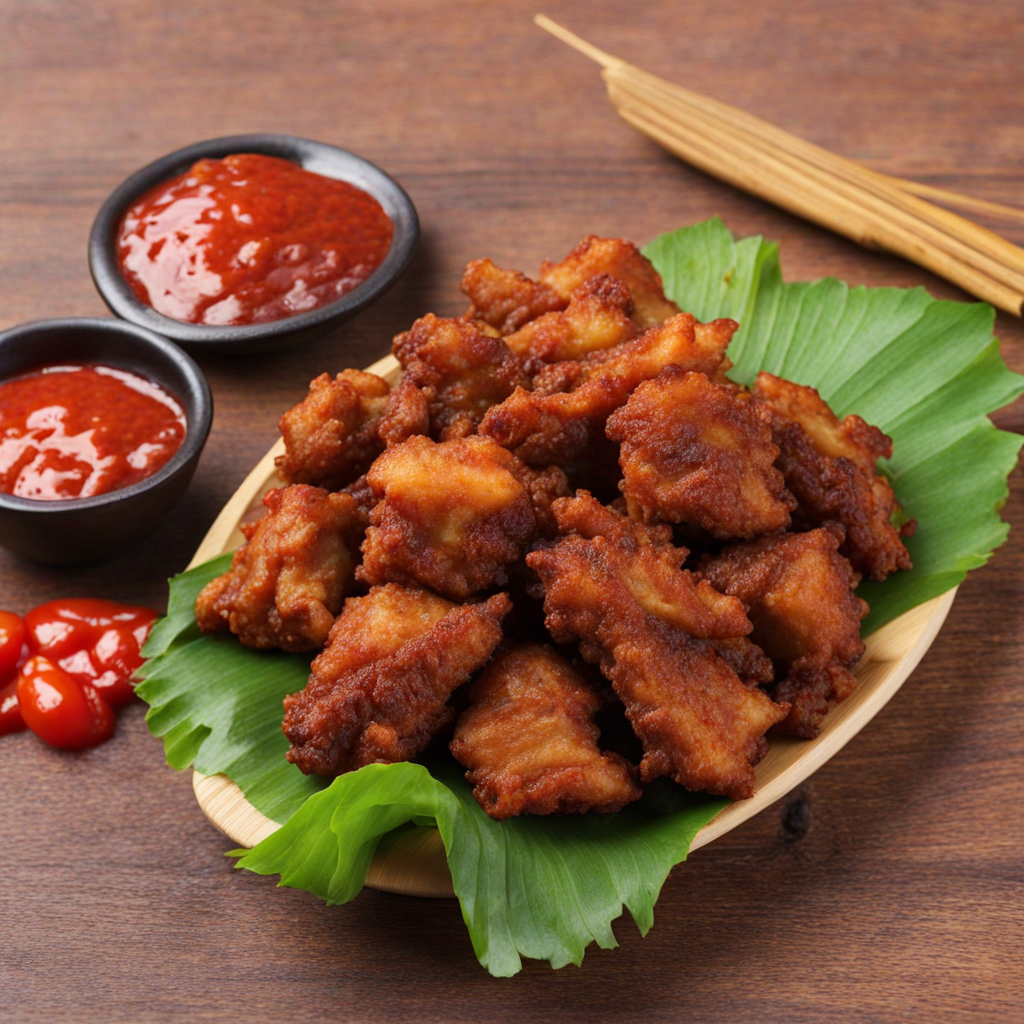Akabenz
Akabenz is a traditional Rwandan dish that tantalizes the taste buds with its rich flavors and hearty textures. This savory delight primarily features well-marinated pieces of pork, typically sourced from local farms, which are seasoned with a blend of spices and herbs unique to Rwandan cuisine. The meat is often grilled to perfection, allowing it to caramelize and develop a smoky richness that enhances its natural flavors. The use of fresh ingredients, including garlic, ginger, and a hint of chili, gives Akabenz a vibrant taste profile that is both aromatic and mildly spicy, appealing to those who enjoy complex flavors in their meals. Served alongside traditional accompaniments, such as ugali (a thick maize porridge) or fried plantains, Akabenz provides a satisfying and wholesome dining experience. The contrast between the juicy, tender pork and the starchy side dishes creates a balanced meal that is both filling and comforting. Additionally, it is common to find a side of sautéed vegetables or a fresh tomato and onion salad, adding a refreshing element that complements the richness of the dish. What makes Akabenz particularly special is not only its mouthwatering taste but also the cultural significance it holds in Rwandan gatherings and celebrations. Often enjoyed during family feasts or special occasions, this dish brings people together, fostering a sense of community and shared enjoyment. For anyone looking to explore the culinary landscape of Rwanda, indulging in Akabenz offers a delightful journey into the heart of Rwandan flavors, showcasing the country's vibrant food heritage.
How It Became This Dish
The Culinary Journey of Akabenz: A Taste of Rwandan Heritage #### Origins and Ingredients Akabenz, a beloved dish in Rwandan cuisine, is primarily composed of marinated and grilled pork, often served with a variety of accompaniments that enhance its flavor profile. The name "Akabenz" translates to "little pig" in Kinyarwanda, reflecting the dish's roots in traditional Rwandan agricultural practices, where pig farming was a common livelihood for many families. Historically, pork was not always a staple in Rwandan diets, as the country was predominantly associated with cattle herding. The Tutsi and Hutu communities relied heavily on beef, which was considered a symbol of wealth and status. However, with the introduction of pigs into Rwandan culture in the mid-20th century, particularly during the colonial period, pork began to carve its niche in the culinary landscape. The pig’s ability to thrive on a modest diet and reproduce rapidly made it an appealing livestock choice for many households, especially in regions where cattle were less feasible to rear. #### Cultural Significance Akabenz is more than just a dish; it is a cultural artifact that embodies the communal spirit and culinary traditions of the Rwandan people. Traditionally, Akabenz is often prepared during special occasions such as weddings, birthdays, and community celebrations. The act of cooking Akabenz typically involves gathering family and friends, fostering a sense of community and togetherness. The dish is often accompanied by a variety of sides, including Isombe (cassava leaves), Ubugari (fermented cassava dough), and Ikivuguto (fermented milk), which not only complement the rich flavors of the pork but also reflect the agrarian lifestyle of the Rwandans. In Rwandan culture, sharing food is an important ritual that signifies hospitality and kinship. The preparation of Akabenz often involves a collective effort, with family members contributing to the marination, cooking, and serving processes. This communal aspect helps to strengthen social bonds and reinforce cultural identity, making Akabenz a symbol of unity and heritage. #### Preparation and Techniques The preparation of Akabenz involves marinating the pork in a mixture of spices, garlic, and sometimes local beer or palm wine, which enhances the meat’s tenderness and flavor. The marination process may last several hours or even overnight, allowing the flavors to penetrate deeply into the meat. Once marinated, the pork is skewered and grilled over an open flame, a method that imparts a smoky aroma and crispy texture to the exterior while keeping the inside juicy and succulent. Traditionally, the grilling is done over a charcoal fire, which is not only a culinary technique but also a cultural practice that brings people together around the fire. The grilling process can be accompanied by storytelling and music, further enriching the communal experience. #### Development Over Time As Rwandan society evolved, so too did the preparation and consumption of Akabenz. The post-colonial period in Rwanda saw significant changes in food practices, influenced by urbanization and globalization. In cities, Akabenz began to appear in restaurants and street food stalls, making it more accessible to the urban population. This shift allowed for the incorporation of modern culinary techniques and flavors, leading to variations of the traditional recipe. With the rise of tourism in Rwanda, particularly after the 1994 genocide, Akabenz gained international recognition as a quintessential Rwandan dish. Efforts to promote Rwandan cuisine as part of the country’s cultural heritage have led to a resurgence of interest in traditional dishes like Akabenz. Local chefs and culinary enthusiasts have taken to experimenting with the dish, creating innovative versions that appeal to both locals and tourists. For instance, some may use additional spices or incorporate local ingredients to create unique flavor profiles that reflect Rwanda’s diverse agricultural bounty. #### Akabenz in Contemporary Rwandan Society Today, Akabenz stands as a proud emblem of Rwandan culinary identity. It is featured prominently in festivals celebrating Rwandan culture, such as Umuganura, the national harvest day, where communities come together to share food and give thanks for the bounties of the land. The dish also serves as a reminder of the resilience of the Rwandan people, who have worked to rebuild and redefine their cultural identity in the aftermath of a tumultuous history. The rise of social media has further elevated the status of Akabenz, with food bloggers and influencers showcasing the dish, thus attracting a younger generation eager to explore their culinary heritage. The dish’s popularity has also prompted culinary schools in Rwanda to include traditional dishes like Akabenz in their curricula, ensuring that future generations will continue to appreciate and preserve these culinary traditions. #### Conclusion The story of Akabenz is one of evolution, resilience, and cultural pride. From its humble beginnings as a symbol of local agricultural practices to its status as a culinary icon of Rwanda, Akabenz encapsulates the richness of Rwandan heritage. Its preparation and consumption foster community, celebrate tradition, and provide a window into the history of Rwandan society. As Rwanda continues to move forward, the legacy of Akabenz remains firmly rooted in its past, serving as a delicious reminder of the country’s journey, its people, and the flavors that bind them together. Whether enjoyed at a family gathering, a bustling street food stall, or a high-end restaurant, Akabenz will always carry with it the stories and spirit of the Rwandan people, making it a true masterpiece of their culinary heritage.
You may like
Discover local flavors from Rwanda







